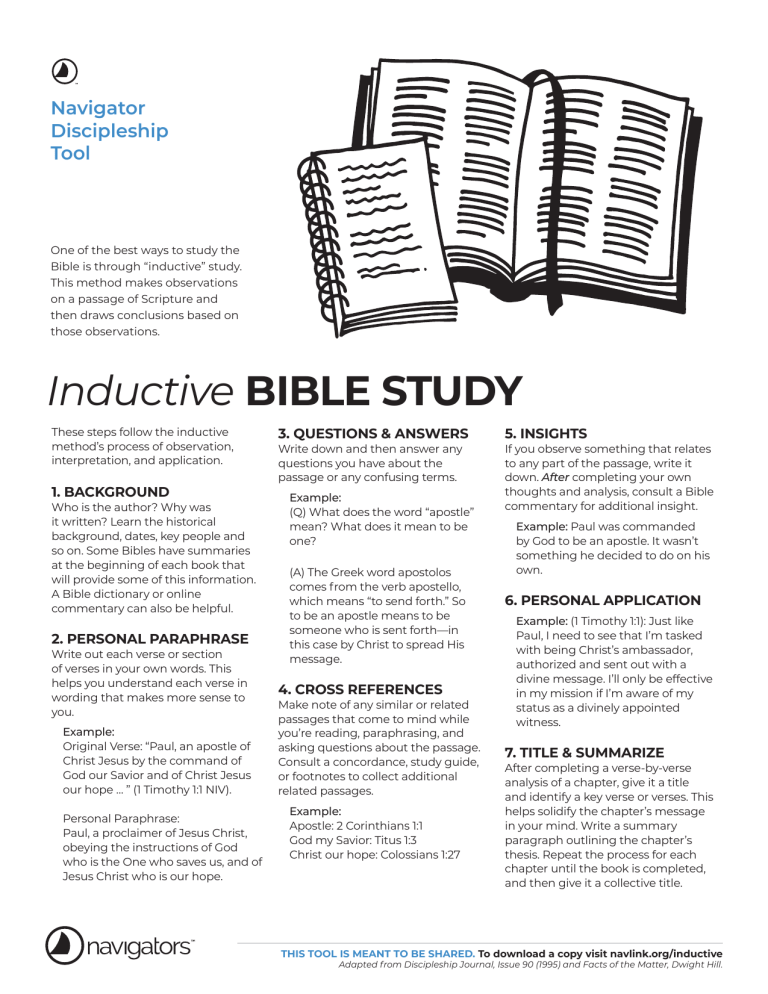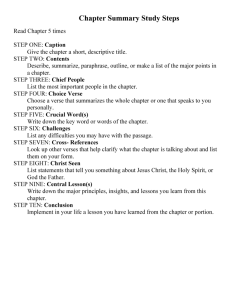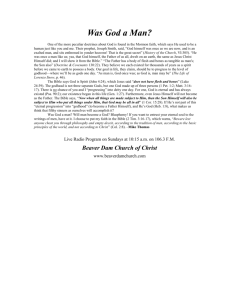
Navigator Discipleship Tool One of the best ways to study the Bible is through “inductive” study. This method makes observations on a passage of Scripture and then draws conclusions based on those observations. Inductive BIBLE STUDY These steps follow the inductive method’s process of observation, interpretation, and application. 1. BACKGROUND Who is the author? Why was it written? Learn the historical background, dates, key people and so on. Some Bibles have summaries at the beginning of each book that will provide some of this information. A Bible dictionary or online commentary can also be helpful. 2. PERSONAL PARAPHRASE Write out each verse or section of verses in your own words. This helps you understand each verse in wording that makes more sense to you. Example: Original Verse: “Paul, an apostle of Christ Jesus by the command of God our Savior and of Christ Jesus our hope … ” (1 Timothy 1:1 NIV). Personal Paraphrase: Paul, a proclaimer of Jesus Christ, obeying the instructions of God who is the One who saves us, and of Jesus Christ who is our hope. 3. QUESTIONS & ANSWERS Write down and then answer any questions you have about the passage or any confusing terms. Example: (Q) What does the word “apostle” mean? What does it mean to be one? (A) The Greek word apostolos comes from the verb apostello, which means “to send forth.” So to be an apostle means to be someone who is sent forth—in this case by Christ to spread His message. 4. CROSS REFERENCES Make note of any similar or related passages that come to mind while you’re reading, paraphrasing, and asking questions about the passage. Consult a concordance, study guide, or footnotes to collect additional related passages. Example: Apostle: 2 Corinthians 1:1 God my Savior: Titus 1:3 Christ our hope: Colossians 1:27 5. INSIGHTS If you observe something that relates to any part of the passage, write it down. After completing your own thoughts and analysis, consult a Bible commentary for additional insight. Example: Paul was commanded by God to be an apostle. It wasn’t something he decided to do on his own. 6. PERSONAL APPLICATION Example: (1 Timothy 1:1): Just like Paul, I need to see that I’m tasked with being Christ’s ambassador, authorized and sent out with a divine message. I’ll only be effective in my mission if I’m aware of my status as a divinely appointed witness. 7. TITLE & SUMMARIZE After completing a verse-by-verse analysis of a chapter, give it a title and identify a key verse or verses. This helps solidify the chapter’s message in your mind. Write a summary paragraph outlining the chapter’s thesis. Repeat the process for each chapter until the book is completed, and then give it a collective title. THIS TOOL IS MEANT TO BE SHARED. To download a copy visit navlink.org/inductive Adapted from Discipleship Journal, Issue 90 (1995) and Facts of the Matter, Dwight Hill.







